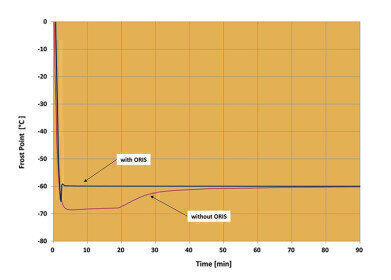Environmental laboratory
New on-site 1ppmv moisture analyser transfer standard
Jan 31 2019
Moisture/humidity analysers are widely applied in industry and science to measure the water content of gases. Depending on the application, various measurement techniques are used, including dew point sensors, electrolytic cells (P2O5), lasers and dew point chilled mirrors.
Product specifications often claim that moisture analysers require no calibration, but the reality is that periodic calibration is essential to validate performance, and to provide the measurement traceability required by quality systems and regulatory bodies.
Moisture/humidity analyser calibration is usually performed by the comparison of the instrument under test with a calibrated transfer standard. The most frequently used transfer standard is a chilled mirror dew point hygrometer that uses a Peltier thermoelectric module to control the mirror temperature to the condensation point. The condensate formation is optically detected, and a platinum resistance element (PRT) measures the mirror temperature that is the dew/frost point value. Dew/frost point can be converted into mixing ratio, absolute humidity and many other parameters so that direct unit comparison is possible.
For a water content of 1 ppmv, the mirror temperature needs to be controlled at -76.39 °C. To enable this, either a multiple stage Peltier thermoelectric module, or a combination of a Peltier and auxiliary mirror pre-cooling are used. Refrigerant compressor based systems are the most commonly used for dry gases as they provide more precise control and better reliability. But these systems are quite large, so their suitability for use on-site is limited.
The new MBW 973L dew point mirror, from MBW Calibration Ltd. solves this issue by integrating a compact high-performance Stirling Cycle cooler to pre-cool the mirror assembly to low temperatures. This enables the instrument to reach mirror temperatures of -80 °C in a portable configuration.
Some hygrometer users have the impression that dew point mirrors are slow to respond and stabilise. This is true, especially in very dry gases. A layer of water will take some time to form, even with high flow rates. The MBW solution to this issue in an integrated function called ORIS (Optimal Response Injection System). ORIS accelerates the formation of the ice layer using a permeation technique. Its use improves stabilisation times at (for example) -60 °C from 2 hours to around 10 minutes.
The MBW 973L has the capability to work over a wide pressure range from near vacuum up to 20 bar and includes a pressure measurement as standard to enable conversion to other units of measurement. This means that comparative calibration can be performed at system pressure, so validation of the analyser under test can be performed at operational conditions. This also means that any pressure related effects on the instrument under test can be evaluated during calibration.
Typical applications for the MBW 973L include in-situ calibration of dew point sensors in compressed air systems, verification of the water content in gas cylinders and validation of moisture analyser performance.
Dew point mirrors are well established as transfer standards in calibration scenarios thanks to their inherent metrological traceability to SI units, and excellent long term stability. Contact MBW for further discussion of their suitability for use in any type of humidity/moisture measurement, calibration or validation application.
Digital Edition
AET 29.2 May 2025
May 2025
Water / Wastewater- From Effluent to Excellence: Microbiological assessment of a containerized modular water reuse pilot system- Without water everything comes to a haltAir Monitoring- Probe Sampli...
View all digital editions
Events
Jun 10 2025 Toulouse, France
Jun 11 2025 Copenhagen, Denmark
Jun 17 2025 Guangzhou, China
Singapore International Water Week Spotlight 2025
Jun 23 2025 Singapore
Jun 24 2025 Santa Clara, CA, USA











.jpg)







